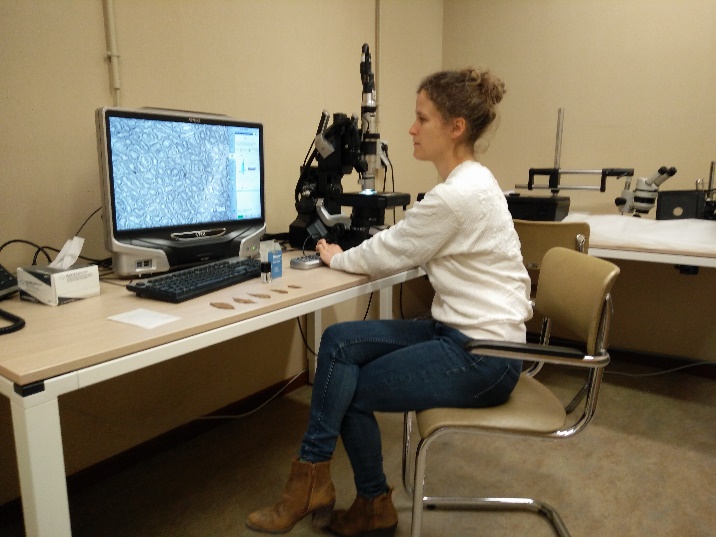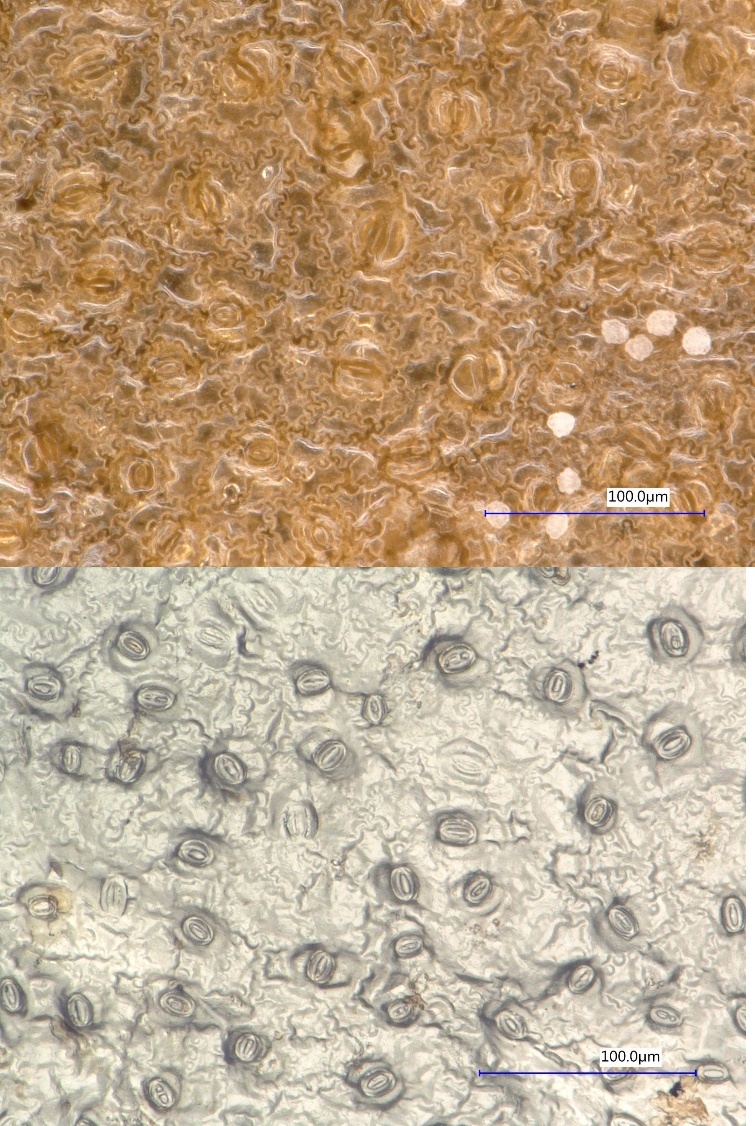Photomicrography of stomata
At the Botanic Garden Meise we aim to measure leaf traits such as leaf area and stomata in about 500 vouchers from the Herbarium. Last summer three students did a great job scanning and weighing five leaves per specimen (see previous blog post). Visualizing and measuring stomata on dried leaf material, however, is a bit trickier. First of all, stomata are microscopic features consisting of only two cells that typically range in length between 10 and 100 microns (comparable to the diameter of a human hair). Luckily here at BGM we have a great digital microscope named the “Keyence” which doesn’t only magnify well but is also able to stack multiple photo’s into one image to obtain a completely sharp picture (“Focus stacking”).
However, even with the Keyence, stomata are not always easy to visualize, especially when the plant material is dried. Overall, we found that a commonly used method, called the nail-varnish method, significantly improved the quality of our pictures. It’s a simple and cheap method in which we use transparent nail varnish to take an impression from the leaf. Thanks to Martine who is volunteering at the Botanic Garden on the COBECORE project, we have now finished with preparing the impressions from a hundred herbarium vouchers which is already 20 percent of the total foreseen samples within COBECORE!
Most researchers that study stomata use fresh instead of dried material. Not only does the quality decrease after drying, stomata also shrink. To quantify this shrinkage by drying we collected leaves from 12 tropical tree species from our living collection and compared stomata size before and after drying. We found that stomata shrink with on average almost 2 microns (2 - 20%) which is something to consider when we use these data for research.
 |
 |
 |
BLOG
herbarium
